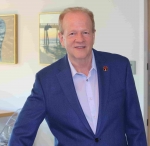
By Doug Kennedy
Turn your mission statement into meaningful daily actions that touch the hearts and minds of both staff and guests.
For decades now, it has been fashionable for companies from all industries to craft a mission statement to not only summarize its purpose, but also to give work more purpose. Over the years, the original concept has evolved into creating “values” or “vision” statements.
In my job as a hospitality industry trainer, I familiarize myself with what each client’s company culture involves, among other things, and determine what, if any, statement of mission, values, or vision they have in place. As one might expect, managers at branded hotels automatically have a slickly crafted mission statement, but even my independent hotel clients and small brands are almost always able to immediately produce documentation when I ask for it.
Often, I find that a considerable amount of focused effort has gone into the creation of these mission / values / vision statements, which I will hereafter refer to as MVVS. Not surprisingly, many top leaders have gone as far as to hire consultants to help their executive teams craft MVVS or perhaps have attended programs such as the ones offered by the Disney Institute. As a result, the statements themselves are heartfelt, succinct, and pithy. Besides a MVVS consisting of a few sentences or a paragraph, many of these also include supportive principles, pillars, or “keys” that expand the concept into more directly actionable ideas.
After obtaining the MVVS, in an effort to contextualize our KTN hospitality training content into the client’s existing organizational culture, during our hospitality workshops I often refer back to the in-house documentation and drop it into my presentation decks. Before showing their MVVS itself, I always first ask the participants: “Who can tell me what your MVV statement is? Who can tell me some of the pillars (or keys)?”
Even when training the most service-obsessed client hotels, rare is the participant who can recite back anything specific. This experience has made me identify that most hotels could do a much better job at making their MVVS more relevant to the real world.
I call this effort “Missionizing Your Mission Statement,” and here are some training tips.
• Simplify and distill the statement. Take a look at your existing statement through the eyes of those who are supposed to execute it. Is the wording and language easy to understand? Or did top-level leaders and consultants use jargon that may not be familiar to all employees? Is the statement too long and wordy?
• If your MVV statement is supported by “pillars,” “keys,” or “principles,” how many are there? Is it a reasonable number for people to remember, and more importantly, to live by? Hint: If you have much more than 5, you probably have too many!
• Adopt a “pillar of the month” theme. If your MVVS has supporting pillars, keys, or principles, pick a different one to focus on each month on a rotating basis. Select a component of that “pillar” or a related concept, then encourage the team to give examples of how they were able to actualize it.
• Make a visual representation to reinforce each key component of the MVVS, such as posters and stickers. Create memes to share in your company’s Slack, Teams, Facebook Workplaces, or other inter-company social media channels.
• Read a component of the MVVS prior to the start of each staff meeting.
• Print the MVVS on business cards or laminated, wallet-size cards.
• Have the MVVS imprinted on other workplace displays such as mouse pads and coffee mugs.
• Establish a staff recognition “caught in the act” program whereby everyone can report incidents during which one of their colleagues demonstrated concepts from the MVVS in action.
Actions like these will ensure that your organization’s MVVS will turn those fancy words on the plaque in the lunchroom into meaningful daily actions that touch the hearts and minds of all stakeholders including both staff and guests.


